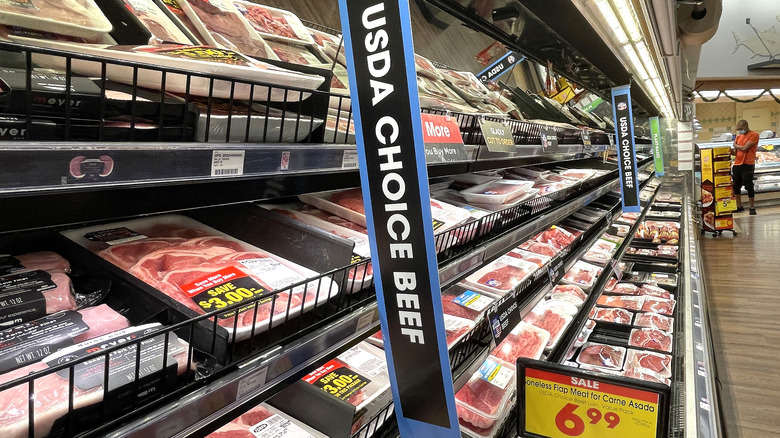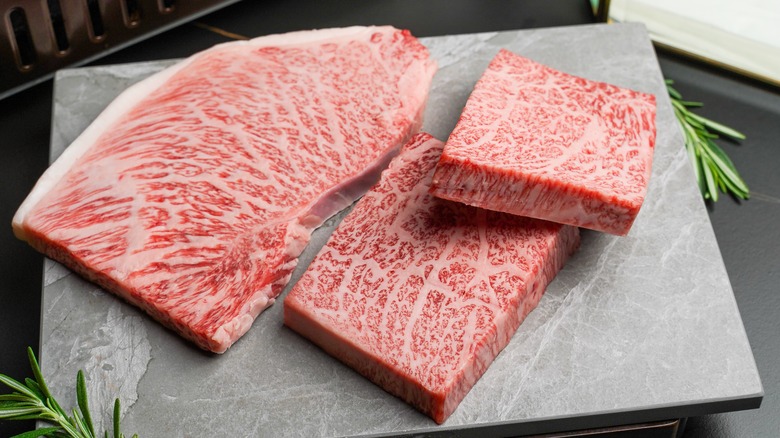What The USDA's Beef Grades Actually Mean
Not all meats and fish that line the grocery store aisles are created equal. There are nuances in the language on the packaging of, for example, meat and eggs. Examples include organic, free-range, cage-free, antibiotic-free, and hormone-free. Not to mention the baseless words like the term "natural" which is used freely by producers and isn't regulated by the USDA. The same confusion is present when choosing cuts of beef.
The USDA grading system is a guiding light when choosing beef; however, it is important to keep in mind not all beef is put up for grading. If the beef is not likely to make the top three categories in the ranked system, it likely won't be put up for grading. "Ungraded" beef is often used for processed and ground meat products.
This is all the more reason to look for the USDA grade on the packaging. To better understand the grading system, let's look at the characteristics of beef.
When you think of a premium cut of meat, many think of what is called "grade A meat". But the letter grade only determines one characteristic of beef: the maturity of the cattle. According to the Texas A&M Department of Animal Science, Grade A beef comes from 9 to 30 month old cattle, grade B is 30 to 42 month old cattle, grade C is 42 to 72 months old, and so on.
But alongside this maturity letter grade, the USDA evaluates several other variables that determine the classification of beef.
Beef grades as easy as A, B, C
Ranking can be split into quality grades — such as tenderness, juiciness, and flavor — and yield grades that measure the amount of usable lean meat on a carcass (via USDA). Based on the grading from these qualifiers, beef is filtered into categories, and the top three you want to look for are prime, choice, and select.
The cheat sheet way to read the quality rating system is to focus on the marbling — the more marbling, the higher the rating. This is because marbling equals intramuscular fat that holds flavor and moisture.
As the name suggests, USDA Prime is the highest grading that beef can receive, and indicates abundant marbling from well-fed, young cattle.
USDA Choice is the next grade down which has slightly less marbling and is great for braising less tender cuts. Alternatively, more mature cattle with abundant marbling can be classified as choice.
Lastly, USDA Select grade denotes a leaner piece of meat with less marbling than prime and choice grades, but unlike choice, select meat only comes from young cattle.
By no means is the grading system meant to be read great to bad — select meats can still be great, desirable cuts for many uses. With a deeper understanding of the grading system comes more informed choices at the meat counter in terms of when to splurge on a well-marbled prime piece of meat, versus when select cuts are more than enough to satisfy your grilling, marinating, and braising needs.

